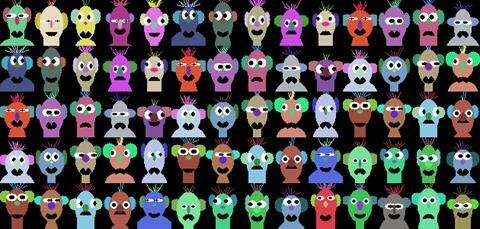As a team of five people we set on to look through the data that was given to us by the Amsterdam Museum. This gave us several headaches since that some of the data from twenty years ago was corrupted in a way that no hard disk was large enough. But finally, with a little help from the webarchaeological volunteers of the Amsterdam Museum, we managed to extract the data from the archive and the search was on.
Researching the data
Whilst I was working on creating a graphical display of the folder structure to easily find an overview of the available data, the others were already searching through the data. Everyone took on a different server - even back in 1995 they were running several servers with backups. DDS used several servers to run the virtual city.
Old code and modern systems
Then one of my team members found the landing page of De Digitale Stad. This was our entry point into finding the Avatar Generator. We followed the trail to the registration page, which was proving already troublesome since the data was not on the place referenced to. Nonetheless we managed to find the registration page. This page in turn pointed us to the compiled version of the Avatar Generator, but a compiled code from 20 years ago did not run on our modern systems. Luckily the creators of the Avatar Generator were kind enough to have left the source code there, so now it was just a question of time to get the Avatar Generator working.
Finding the Avatar Generator
The rest of the group started working on the paper we had to write. But I kept going to get this Avatar Generator working for the first time since twenty or so years ago. In the end our efforts were not in vain, not only did we find the Avatar Generator, but we also got it working. You can download and read our paper, for which we were rewarded a good mark! And this digital heritage discovery moreish…
To be continued.
Author: Marc Went
Read more:
- UvA studenten graven avatar-generator op (dutch)
- College 'History of digital cultures' at the University of Amsterdam by dr. Gerard Alberts.

